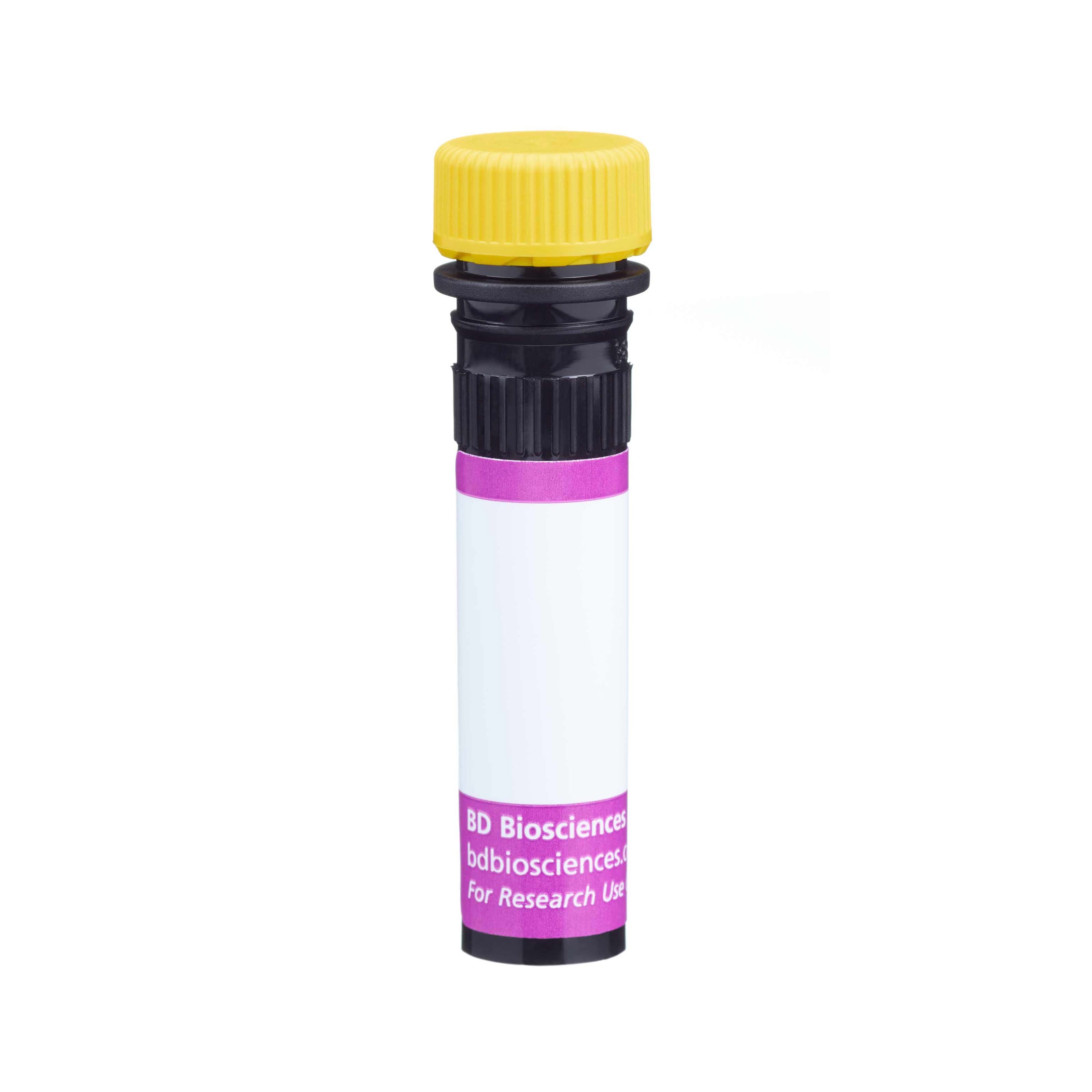Old Browser
This page has been recently translated and is available in French now.
Looks like you're visiting us from {countryName}.
Would you like to stay on the current country site or be switched to your country?


Regulatory Status Legend
Any use of products other than the permitted use without the express written authorization of Becton, Dickinson and Company is strictly prohibited.
Preparation And Storage
Recommended Assay Procedures
For optimal and reproducible results, BD Horizon Brilliant Stain Buffer should be used anytime two or more BD Horizon Brilliant dyes (including BD OptiBuild Brilliant reagents) are used in the same experiment. Fluorescent dye interactions may cause staining artifacts which may affect data interpretation. The BD Horizon Brilliant Stain Buffer was designed to minimize these interactions. More information can be found in the Technical Data Sheet of the BD Horizon Brilliant Stain Buffer (Cat. No. 563794).
Product Notices
- This antibody was developed for use in flow cytometry.
- The production process underwent stringent testing and validation to assure that it generates a high-quality conjugate with consistent performance and specific binding activity. However, verification testing has not been performed on all conjugate lots.
- Researchers should determine the optimal concentration of this reagent for their individual applications.
- An isotype control should be used at the same concentration as the antibody of interest.
- Caution: Sodium azide yields highly toxic hydrazoic acid under acidic conditions. Dilute azide compounds in running water before discarding to avoid accumulation of potentially explosive deposits in plumbing.
- For fluorochrome spectra and suitable instrument settings, please refer to our Multicolor Flow Cytometry web page at www.bdbiosciences.com/colors.
- Please refer to www.bdbiosciences.com/us/s/resources for technical protocols.
- BD Horizon Brilliant Stain Buffer is covered by one or more of the following US patents: 8,110,673; 8,158,444; 8,575,303; 8,354,239.
- BD Horizon Brilliant Violet 650 is covered by one or more of the following US patents: 8,110,673; 8,158,444; 8,227,187; 8,455,613; 8,575,303; 8,354,239.
- Alexa Fluor® is a registered trademark of Life Technologies Corporation.
Companion Products






The AH9R7 monoclonal antibody specifically binds to the Interleukin-9 Receptor (IL-9R, IL-9Rα) also known as CD129. CD129 is a Type I transmembrane glycoprotein and a Type I Cytokine Receptor (Hemopoietin) Superfamily member. The high-affinity, signaling IL-9 Receptor complex is comprised of CD129 (IL-9 Receptor alpha chain subunit) and CD132 (common γ chain/γc). CD129 is expressed by hematopoietic progenitors, thymocytes, T cells, B cells, macrophages, eosinophils, mast cells, epithelia cells, muscle cells and neurons. IL-9 signals through the IL-9R complex (ie, through JAK, STAT and related signal pathways) to regulate the growth, proliferation, differentiation and survival of myeloid and erythroid progenitor cells, thymocytes, T cells, B cells and some tumor cells.
The antibody was conjugated to BD Horizon™ BV650 which is part of the BD Horizon Brilliant™ Violet family of dyes. This dye is a tandem fluorochrome of BD Horizon BV421 with an Ex Max of 405-nm and an acceptor dye with an Em Max at 650-nm. BD Horizon BV650 can be excited by the violet laser and detected in a filter used to detect APC-like dyes (eg, 660/20-nm filter). Due to the excitation and emission characteristics of the acceptor dye, there will be spillover into the APC and Alexa Fluor® 700 detectors. However, the spillover can be corrected through compensation as with any other dye combination.

Development References (6)
-
De Smedt M, Verhasselt B, Kerre T, et al. Signals from the IL-9 receptor are critical for the early stages of human intrathymic T cell development. J Immunol. 2000; 164(4):1761-1767. (Clone-specific: Inhibition). View Reference
-
Demoulin JB, Uyttenhove C, Van Roost E, et al. A single tyrosine of the interleukin-9 (IL-9) receptor is required for STAT activation, antiapoptotic activity, and growth regulation by IL-9. Mol Cell Biol. 1996; 16(9):4710-4716. (Clone-specific: Flow cytometry, Immunoprecipitation). View Reference
-
Grasso L, Huang M, Sullivan CD, et al. Molecular analysis of human interleukin-9 receptor transcripts in peripheral blood mononuclear cells. Identification of a splice variant encoding for a nonfunctional cell surface receptor. J Biol Chem. 1998; 273(37):24016-24024. (Clone-specific: Flow cytometry, IC/FCM Block, Immunohistochemistry, Immunoprecipitation). View Reference
-
Pilette C, Ouadrhiri Y, Van Snick J, et al. IL-9 inhibits oxidative burst and TNF-alpha release in lipopolysaccharide-stimulated human monocytes through TGF-beta. J Immunol. 2002; 168(8):4103-4111. (Clone-specific: Flow cytometry, Inhibition). View Reference
-
Pilette C, Ouadrhiri Y, Van Snick J, et al. Oxidative burst in lipopolysaccharide-activated human alveolar macrophages is inhibited by interleukin-9. Eur Respir J. 2002; 20:1198-1205. (Clone-specific: Functional assay, Inhibition). View Reference
-
Wilhelm C, Turner JE, Van Snick J, Stockinger B. The many lives of IL-9: a question of survival?. Nat Immunol. 2012; 13(7):637-641. (Biology). View Reference
Please refer to Support Documents for Quality Certificates
Global - Refer to manufacturer's instructions for use and related User Manuals and Technical data sheets before using this products as described
Comparisons, where applicable, are made against older BD Technology, manual methods or are general performance claims. Comparisons are not made against non-BD technologies, unless otherwise noted.
For Research Use Only. Not for use in diagnostic or therapeutic procedures.
Report a Site Issue
This form is intended to help us improve our website experience. For other support, please visit our Contact Us page.